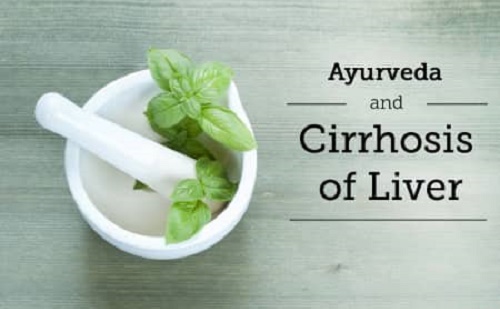Cirrhosis is a complication of many liver diseases. It is a chronic state in which the liver slowly degenerates and crashes due to chronic liver injury. Scar tissue replaces the healthy liver tissue, partially blocking the flow of blood through the organ.
A healthy liver can revitalise most of its cells when they become damaged, but with end-stage Liver Cirrhosis, the liver can no longer effectively replace damaged cells.
Cirrhosis is the prevalent leading cause of death, accounting for around 28,000 deaths every year.
Causes
Cirrhosis is most commonly caused by excessive intake of alcohol, hepatitis B and C, and fatty liver disease, but has many other possible reasons—
- Obesityis a prevalent cause of Cirrhosis, either as the sole cause or in combination with alcohol or hepatitis C.
- Alcohol-related liver disease– Heavy alcohol use over several years can cause chronic injury to the liver. Deaths caused by obesity-related Cirrhosis are increasing.
- Hepatitis C– Chronic hepatitis C causes inflammation and damage to the liver over time that can lead to Cirrhosis.
- Hepatitis B and D– The hepatitis B virus is a liver infection that is spread by proximity with an infected person’s blood or other body fluid. Hepatitis B can also cause liver inflammation and injury, which could lead to Cirrhosis. The hepatitis B vaccination is given to all infants and many adults to prevent that virus. Hepatitis D infects the liver and can lead to Cirrhosis, but it occurs only in people who already have hepatitis B.
- Nonalcoholicfatty liver disease(NAFLD) – In this type of liver disease, fat builds up in the liver and eventually ends up in Liver Cirrhosis. The progressively common liver disease is associated with obesity, diabetes, protein malnutrition, and so on.
- Autoimmune hepatitis– is caused by the body’s immune system attacking liver cells and causing inflammation, damage, and eventually Cirrhosis.
- Inherited diseases– Cystic fibrosis, galactosemia, and glycogen storage diseases are inherited disorders, which interferes with how the liver builds, processes, and stores enzymes, proteins, metals, and other substances the body needs, Cirrhosis can result from these conditions.
Symptoms
Many people with Liver Cirrhosis have no symptoms in the early stages of the disease, but as the condition progresses, they may experience the following symptoms:
- Loss of appetite
- Fatigue
- Vomiting
- Weight loss or weight gain
- Jaundice
- Fluid retention (oedema) and swelling in the ankles, legs, and abdomen
- Spiderlike veins
- A brownish tint to the urine
- Light-coloured stools
- Blood in the stool
- Fever
Ayurveda Management
The liver is called Yakrit in Ayurveda. Most of the liver disorders are aggravated conditions of Pitta. Excessive bile production or any blockage in the flow of bile indicates high Pitta, which in turn affects the Agni [Digestive Fire] or enzyme activities responsible for absorption, digestion and metabolism.
Kumbha Kamala is the classic description of Cirrhosis of the liver according to Ayurveda.
It is a neglected or untreated stage of jaundice or hepatitis, when it becomes chronic, produces dry or roughness to the Liver (Kharathva or Rookshatva). The condition has to be attended to, immediately. Treatment involves Shodhana Chikitsa (detoxification through Panchakarma procedures), Shamana Chikitsa [therapy] and Kayakalpa (rejuvenation). Ayurvedic treatment is useful in improving liver health and preventing further damage to it.
De-addiction, diet restrictions and lifestyle modifications are also essential factors practised for the best possible results.
Ayurvedic Herbs for Healthy Liver Function
*Turmeric
Turmeric is an anti-inflammatory ‘spice’ that is regarded very highly in Ayurveda for its purification effects. It is often used in diet to detoxify the liver. While it is known to balance all doshas, turmeric excels at Pacifying Pitta, therefore making it a perfect remedy for liver diseases.
*Ginger
‘Ginger’ is one of the most frequently used herbs across the world. It is regarded as a superfood that destroys Ama or toxins and supports healthy digestion and respiration. Although its Rasa and Virya make it potentially Pitta aggravating, it can be beneficial for the liver when consumed in moderation. As an antioxidant agent, ginger can reduce oxidative stress, counter inflammation, and inhibit other factors that contribute to nonalcoholic fatty liver. Include fresh ginger or ginger powder to your drinks and dishes or use ginger supplements.
*Cinnamon
Cinnamon doesn’t just have a delectable flavour; it is also very healthy. Cinnamon is also used in many Ayurvedic formulations. With a sweet rasa and tart, the herb an excellent pacifying agent for the Vata and Kapha.
*Amla
Amla, better known as Indian gooseberry, has been an essential Ayurvedic ingredient. It is used in a range of herbal formulations—like Chyawanaprash and Triphala. Amla has a balancing effect on all three doshas and is known for its immune-boosting fact. Amla supports general health and is believed to help lower toxicity levels in the body.
Conclusion
There are no approved drugs for conditions like fatty liver disease. Maintaining healthy body weight is broadly regarded as an essential strategy for the management of the liver disease.
At Madras Institute of Ayurveda, Chennai, we offer diagnosis and treatments for the disease and not just the symptoms. With the help of modern techniques, treatment ranges from Panchakarma treatment to rejuvenation treatment.
To learn more about how the treatment plan works, visit us at www.miayurveda.org


